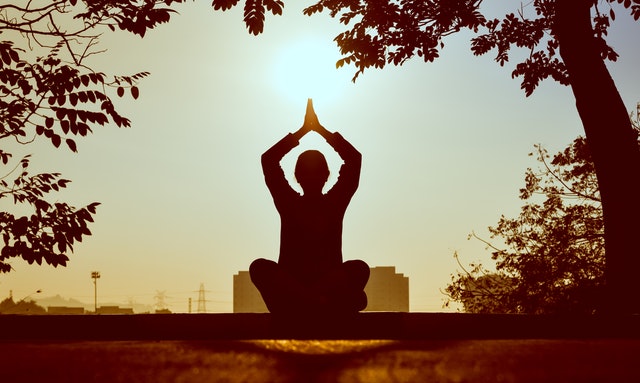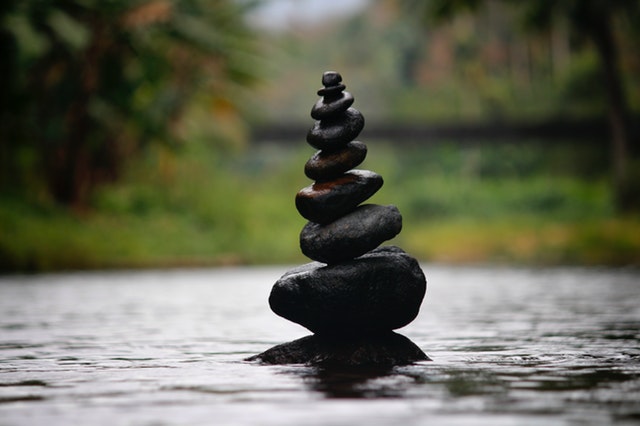How Practice Gratitude & Meditation Like A Billion-Dollar CEO (A No BS Guide For Skeptics)

If you aren’t convinced that mindfulness, meditation, and gratitude are habits that are worth your time, I’ve got good news…
It’s ok!
Maybe you’ve heard successful people talk about these practices before or dabbled in them yourself to no avail…and you just don’t see what the fuss is.
I get it. I’ve been there too.
But today, I’m going to cut through the woo woo superstition and New Age fluff surrounding these habits and show you why–when they’re done properly–they are one of the “missing keys” to the success you’re after.
You already know just how many celebrities, successful entrepreneurs, billion-dollar CEOs and industry leaders directly attribute these very habits to their ability to perform at the highest level.
For reference, here are just a few individuals who swear by these practices (you’ll likely recognize just from their first name):
- Oprah
- Beyonce
- Tony
- Warren
- Kobe
- Zig
- Ellen
- Donald
(Just kidding on that last one)
The bottom line is that there is a direct link between these practices and becoming more successful–period.
And in this article, I’m going to show you WHAT these habits can do to turn you into a high performer, WHY they work and HOW to get started – the right way.
What’s the Point of Gratitude and Mindfulness Anyway?

Regardless of your lot in life, we all experience ups and downs, often in unison.
You close the biggest deal of your life, come home from work excited to share the win with your family–and find out that your wife found drugs in your son’s room.
You’re going out to date night, excited to connect with your spouse and some jerk cuts you off in traffic and nearly sends you flying off the road–souring your mood for the entire evening.
You work tirelessly for months on an important campaign and have your first 6-figure launch…and then you realize that you have to cut the biggest check of your life to the IRS.
Life happens. And none of us are immune to the storms of life.
Ultimately, the purpose of practices like gratitude, mindfullness, and meditation is to “balance” our emotional experiences and allow us to remain internally consistent throughout the external chaos and even excitement of life.
Although these practices are often conflated with “spirituality”, transcendence, religion, or connecting with a higher power, at their basest level, they are nothing more than exercises designed to strengthen your emotional control.
This type of deep personal work allows you to stay grounded and keep centered, acting as your highest self when you would otherwise succumb to hopelessness, fear, “catastophization”, and overwhelm.
Just as importantly, they allow you to keep perspective on the wins you achieve and, instead of resting on your laurels, encourage you to keep momentum and look for ways you can do even better next time.
Instead of allowing your ego to sabotage your progress, they remind you that success and failure are both temporary and that you’re only as good as your last “game”.
These habits keep us steady, grounded and with our eyes on the big picture as we journey through the valleys between the peaks of our careers and lives.
Instead of overreacting, lashing out in anger, or believing that a temporary setback is the end of the world, you’ll move through life like an Operator…calm, cool, collected, and focused on the end goal.
As Dr. John Demartini said in his book The Breakthrough Experience:
“When you realise that the bad things in life aren’t so terrible, and the good things in life aren’t so terrific, you can be quietly grateful for whatever occurs.”
Why Do Gratitude and Meditation Work?

In short, these practices allow you to separate your “self” from your “emotions”.
Tony Robbins was holding a seminar on September 11, 2001 and noticed something about his audience as they reacted to the terrible events of that day:
The people who were generally angry about life got angry about 9/11.
The people who were dealing with fear became scared of what the attack meant for their safety.
But a small group of individuals seemed unperturbed by the attacks.
It’s not to say that they weren’t saddened by the nations loss or concerned about what it meant for their safety and future…simply that their reality was not dominated by these emotions.
They were able to peer through the chaos and keep a level head. Recognizing what they could and could not control and observing their emotions from a calm state instead of being ruled by them.
This dramatic and invasive event brought out people’s natural emotional set-point or state through which they had learnt to navigate through life.
And THAT is the point of these practices.
When you integrate these habits into your life you realize that humans are not anger, fear, triumph or frustration – those are just emotions we feel.
When you can experience those emotions and still continue to enjoy working towards a better life, you’ll experience a radical shift in the way you show up each day.
The reason these practices work is because they allow you to train and condition your mind for two specific outcomes:
- The ability to focus on the positives, on everything right in your life even if it feels like your life is going to hell in a handbasket.
- They allow you to experience your emotions instead of being controlled by your emotions.
Take, for example, anxiety (a very common phenomenon among the entrepreneurially inclined).
When most people experience anxiety, they think, “I’m an anxious person…nothing is working, I’m going to fail at everything, no one loves me, Gahhh!”
These practices change that.
Instead of identifying with your emotions and allowing them to determine your state, you can experience the emotion without giving in.
Instead, your experience will be something like, “Huh. My human is experiencing anxiety right now. I know that there’s nothing seriously wrong right now…I have my health, I’m not going to lose my job/business, my spouse loves me, and my kids are safe… what is the real cause of this emotion and what action do I need to take to eliminate it?”
Can you feel the difference?
Now, simply “saying” that these practices are an emotional “force multiplier” is one thing.
But there’s a growing body of research that proves what the mystics and gurus of the past few millennia have known all along.
These practices WORK. And they work remarkably well.
According to various studies (which you can find on this page and this one), meditation, gratitude, and mindfulness have been shown to:
- Reduce stress and anxiety
- Increase happiness (on a neurological level)
- Increase attention span
- Reduce age-related memory loss
- Improve willpower
- Reduce pain
- Improve sleep quality
- Decrease blood pressure
And that’s just the tip of the iceberg!
The ability to meditate or practice mindfulness and separate yourself from your emotions – or ground yourself in gratitude – is like sheltering a boat from those waves.
Of course, you’ll continue to feel sad when tragic things happen. That’s normal (but remember there’s a difference between feeling sad and being a sad person).
You’re allowed to celebrate when a perfectly-executed plan works just the way you want it to…
But when nothing rocks your boat, you’re able to respond to what’s going on around you in the best way possible.
That might mean that you’re able to resolve conflict quickly and effectively instead of getting ‘involved’.
It might be a greater ability to move on from a failure in your business to the next campaign, promotion or growth strategy without losing enthusiasm (Winston Churchill would call that the very definition of success).
You could even say that these habits help you achieve your TRUE potential by protecting you from complacency with what you have NOW versus what you could achieve if you continue to push yourself to greater things.
When you consider that list of first-name famous people I mentioned earlier and how incredible their careers have been…
(Oprah, Beyonce, Tony, Warren, Arianna, Kobe, Lebron, Zig, Brendon and Ellen, in case you forgot)
You’ll notice that they have all faced immense struggle or challenge at some point in their lives – and they all reached a point where they could have easily retired, spending their days resting on the laurels of what they’d accomplished.
Yet they all continue to improve their skills, finances, businesses and lives even when they didn’t know how – and didn’t have to.
Nothing rocked their boat – not legacy-threatening court cases or 7-figure launches.
They kept on reaching for their potential because they showed up as their best self, designing their life around dedication to the work that mattered to them with people they love.
Ok, I’m Sold! But How Do I Get Started?

Good news: Practices such as mindfulness, gratitude, and meditation aren’t brain surgery.
And if you get them only 80% right, you’ll see remarkable benefits in your life.
But like anything else, if you are SERIOUS about achieving the outcome, you must be equally as SERIOUS about your commitment to the practice.
These habits take time before the effects are felt and you should expect to spend at least a few weeks (maybe even a few months) before anything really ‘clicks’.
But if you stay the course and trust the process, I promise you’ll be amazed by the results.
With that out of the way, here are a few quick tips to help you implement these habits the right way.
1. Gratitude
“The most important decision we can make is to choose to believe whether we live in a friendly or hostile universe.” ~ Albert Einstein
Simply put, the practice of gratitude involves expressing appreciation for everything that is going well in your life and all the many positives you experience on a daily basis.
That’s easy to do when you’re having a really good day – but harder (and more important) to do when you’re struggling.
The fastest way to develop gratitude is to either stack it with to one of your existing daily rituals (such as journaling, talking with your spouse at the end of the day, brushing your teeth)…
Or (my preferred method), to set a repeating alarm on your phone (pick a random time of day) and when it goes off, take just a few moments to reflect on how the thing you’re currently doing is happening FOR YOU – not to you.
If your alarm beeps and you’re stuck in traffic – great. You’re learning how to be patient.
If your alarm goes off while you’re in the middle of a disagreement with your spouse or partner – perfect. Acknowledge that you’re in a relationship with someone who won’t quit when things get hard – and neither will you.
Bedros Keuillian writes in the book “Man Up” how he chose to view his upbringing as a non-English speaking immigrant to America with no money as a chance for him to learn to be hungry for more, be resourceful and develop good people-skills.
He chose to believe that gave him “The Immigrant Edge” – and those kinds of decisions are incredibly difficult to make, but it’s a classic example of gratitude in action.
When you’re able to take the next step and extract gratitude from more and more challenging life events, you’ll find yourself in a state of being a LOT like a Fijian man who I met on holidays once…
When I asked him what made him feel good, he smiled and said “I like it when the sun shines.”
Obvious stuff, I thought – but he went on to explain he was happy when the weather was cold and cloudy because he was more comfortable going to sleep – and when it rained, because his bananas grew better.
(Also, night-times made him happy because that’s when you can see the stars)
Imagine what would happen to you if your life was like that – if you deliberately practiced a habit which ensured that no matter what happened, you knew why it was good for you and nothing ever rocked your boat.
Give this practice a try for 30-days before committing to meditation or mindfulness (much more challenging practices) and see how your mindset and emotions change.
2. Meditation and Mindfulness
Meditation and mindfulness (two very similar and almost interchangeable practices) can be used as an extension of, and supplement to, gratitude.
Essentially they train you to focus your mind where you want it to go – rather than have your emotional state dictated to you by the events and circumstances around you.
Highly skilled soldiers reach the same outcome through years of repetition – no matter how sticky a situation they find themselves in, their response is governed by their training and they know the right thing to do in any environment.
The good news is that you can have that in your business, career, or personal life without getting sand kicked in your face at some sweaty boot camp.
Controlling your focus and awareness so you are able to respond to life’s events – rather than react emotionally – can be achieved by any number of methods, such as…
- Mindfulness (focussing exclusively on one part of your body – for example your breath)
- Yoga
- Repeating a mantra to yourself (transcendental meditation)
- Guided meditation audios from YouTube or Headspace
- Walking meditation (breathe in for four steps, hold for four, breathe out for four, hold for four)
- Visualization (holding the sights, sounds and smells of a beach or something similar in your mind for a period of time)
You’ve heard about most of these already and know how to do at least one – but what you might not know is that one of these techniques is actually better than all the others:
The one that you stick to every day.
Personally, I like to keep things simple and will often set a 10-minute timer, lay down on the couch, and simply focus on my breathing until the alarm goes off.
But the most important part of this habit is to find what works for you.
If you prefer an intense hot yoga session to sitting cross legged on a cushion and chanting a mantra…great! There’s no one size fits all approach and regardless of what your favorite guru says, you don’t need to follow a specific iteration of this practice to see spectacular benefits.
Similar to exercise, sleeping more or studying, you’re not going to notice anything tangible right away once you begin these practices…
But with some time and discipline, you’ll notice that you are able to handle the ups and downs of life better.
You’ll realise that it’s easier to direct your focus to things that you can be grateful for in life.
If you’re really self-aware, you’ll perceive that no longer find yourself thinking, “Man, I would’ve done that different if I had another chance.”
You’ll see more opportunities, solve problems faster, become more, and generally become a better person to spend time with.
Think about those famous entrepreneurs, athletes and celebrities I mentioned earlier and consider how often they do things that they regret later on. Think about how ‘lucky’ they look to us on the outside – or how fast they can grow a business.
There’s no secret to that – it’s just gratitude, mindfulness and meditation.
You could take the hard road to achieving any goal, wishing the journey were less challenging and that success came more frequently and easily…
Or you can use these tools to ensure that you are at your peak every day, performing at the highest level you can and stoically gaining momentum no matter what stands between you and what you want to achieve.
(And you won’t have to do a single slow-motion karate chop in a garden)
Over to You…
Now that you have a better understanding of what gratitude and meditation really are (and how to use them the right way), I’m curious…
How are you going to get started?
Which of these practices are you going to try first? What is the biggest benefit you want to achieve?
Let me know in the comments below.
